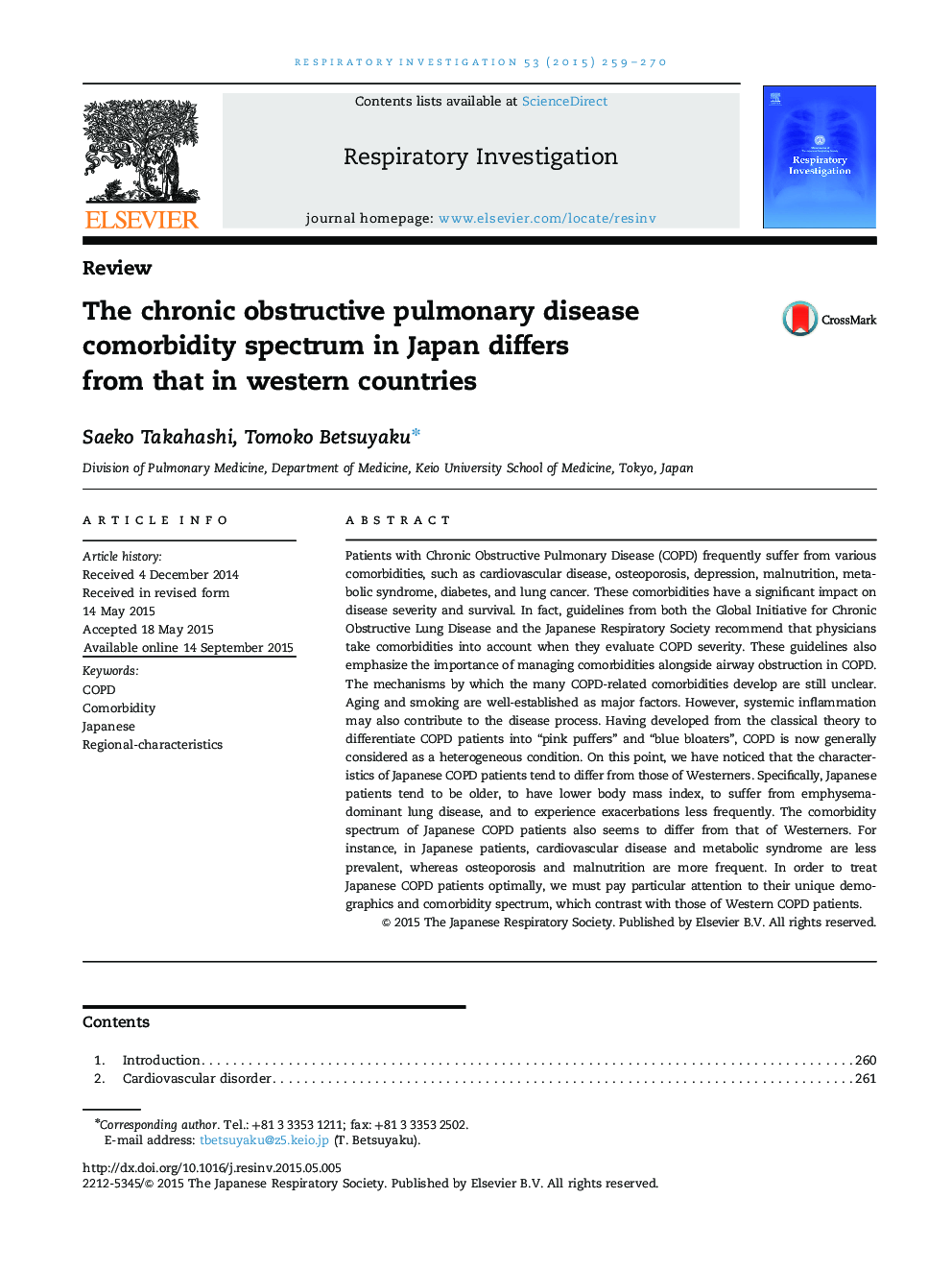| Article ID | Journal | Published Year | Pages | File Type |
|---|---|---|---|---|
| 3418613 | Respiratory Investigation | 2015 | 12 Pages |
Patients with Chronic Obstructive Pulmonary Disease (COPD) frequently suffer from various comorbidities, such as cardiovascular disease, osteoporosis, depression, malnutrition, metabolic syndrome, diabetes, and lung cancer. These comorbidities have a significant impact on disease severity and survival. In fact, guidelines from both the Global Initiative for Chronic Obstructive Lung Disease and the Japanese Respiratory Society recommend that physicians take comorbidities into account when they evaluate COPD severity. These guidelines also emphasize the importance of managing comorbidities alongside airway obstruction in COPD. The mechanisms by which the many COPD-related comorbidities develop are still unclear. Aging and smoking are well-established as major factors. However, systemic inflammation may also contribute to the disease process. Having developed from the classical theory to differentiate COPD patients into “pink puffers” and “blue bloaters”, COPD is now generally considered as a heterogeneous condition. On this point, we have noticed that the characteristics of Japanese COPD patients tend to differ from those of Westerners. Specifically, Japanese patients tend to be older, to have lower body mass index, to suffer from emphysema-dominant lung disease, and to experience exacerbations less frequently. The comorbidity spectrum of Japanese COPD patients also seems to differ from that of Westerners. For instance, in Japanese patients, cardiovascular disease and metabolic syndrome are less prevalent, whereas osteoporosis and malnutrition are more frequent. In order to treat Japanese COPD patients optimally, we must pay particular attention to their unique demographics and comorbidity spectrum, which contrast with those of Western COPD patients.
